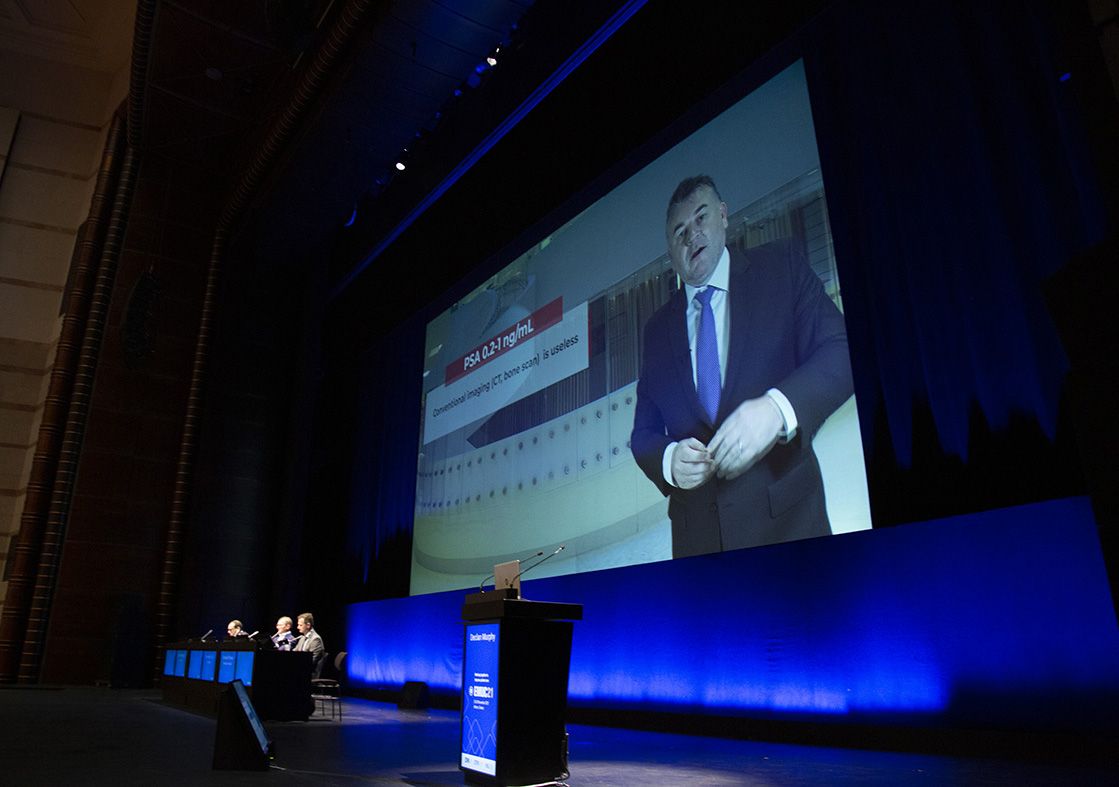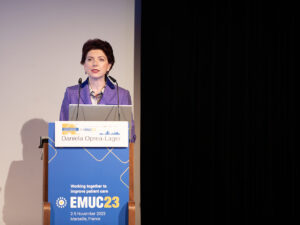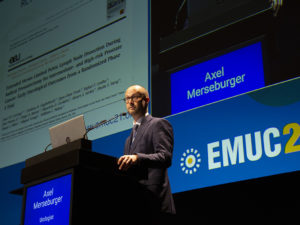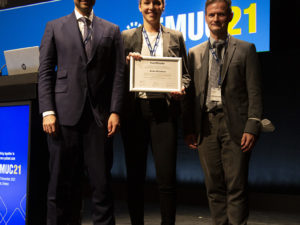Plenary Session 1 “Prostate cancer staging in 2021: Where are we, where are we going?” provided delegates with expert insights on PSMA PET/CT’s role in optimising staging and monitoring treatment. Radiologist Prof. Dr. Raymond Oyen (BE), radiation oncologist Prof. Michael Pinkawa (DE), and urologist Prof. Alberto Briganti (IT) chaired this session.
In his pre-recorded lecture “Optimal staging approach in men recurring after primary treatment”, Prof. Declan Murphy (AU) stated, “There is no role for imaging in patients with PSA > 0.2 ng/mL detectable on an ultrasensitive assay.”
He cited three publications (1) which confirmed that the cancer benefit of waiting for PSA to reach 0.2 ng/mL first and then offering salvage radiotherapy is as good as providing adjuvant radiotherapy when the PSA is below 0.2 ng/mL. Moreover, it is less toxic and overtreatment can be avoided. He added that imaging may have a role within the range of 0.2 ng/mL up to about 2 ng/mL.
According to Prof. Murphy, conventional imaging such as CT and bone scan is pointless in these low-range settings. “Please don’t do a CT and bone scan when the PSA climbs above 0.2 ng/mL even just to reassure your anxious patients. MRI has a role for staging loco-regional recurrence especially if novel imaging is unavailable.”
He underscored that PSMA PET/CT is the best imaging tool for biochemical recurrence as it is the most sensitive and the most specific imaging modality for biochemical recurrence for PCA patients. “Use PSMA PET/CT once the PSA is above 0.2 ng/mL as it may change your management.”
Prof. Murphy referred back to the findings of the aforementioned three publications (1) which collectively substantiated that PSMA PET/CT has an impressive sensitivity for detecting disease in men with biochemical recurrence even at very low PSA levels of < 1 ng/mL with specificity well above 90%. He added, “PSMA PET/CT offers a safe, one-stop whole-body scan with excellent tumour-to-background-contrast ratio.”
Treatment monitoring
Following Prof. Murphy’s presentation was the lecture of radiologist Dr. Ekaterini Tavermaraki (GR) entitled “How to use imaging for treatment monitoring in metastatic prostate cancer”.
Dr. Tavermaraki stated that conventional imaging still has a role in the follow-up of patients under systemic treatment. She added that modern PSMA PET/CT imaging techniques provide better sensitivity and specificity for metastases detection, especially in biochemical recurrence in low values of PSA. Subcentimeter-target lesions which are not measurable at CT, are visualized. PSMA PET/CT imaging provides earlier response information than anatomic imaging methods.
She also mentioned the pitfalls of PSMA PET/CT which include low to moderate PSMA expression in osteoblastic activity, moderate uptake in haemangiomas, and chronic inflammation can also be associated with PSMA uptake. She stated, “All of these cases correlate with anatomic findings. If there is uncertainty, ongoing monitoring of the PSA level with follow-up PSMA PET is suggested.”
In addition, the limitation of PSMA PET/CT is that if the primary tumour is not PSMA-avid, the sensitivity for detecting nodal or distant metastatic disease will be lower, and closer attention must be given to anatomic review.
Watch the full presentations of Prof. Murphy and Dr. Tavermaraki and other must-view presentations of Plenary Session 1 via the Resource Centre.
References:
- Gallium-68 Prostate-specific Membrane Antigen Positron Emission Tomography in Advanced Prostate Cancer-Updated Diagnostic Utility, Sensitivity, Specificity, and Distribution of Prostate-specific Membrane Antigen-avid Lesions: A Systematic Review and Meta-analysis (Perrera et al, Eur Urol 2020)
- Assessment of 68Ga-PSMA-11 PET Accuracy in Localizing Recurrent Prostate Cancer: A Prospective Single-Arm Clinical Trial (Fendler, Calais, Eiber, et al., JAMA Oncol 2019)
- Diagnostic Performance of 18F-DCFPyL-PET/CT in Men with Biochemically Recurrent Prostate Cancer: Results from the CONDOR Phase III, Multicenter Study (Morris et al., Clin Can Res 2021)





